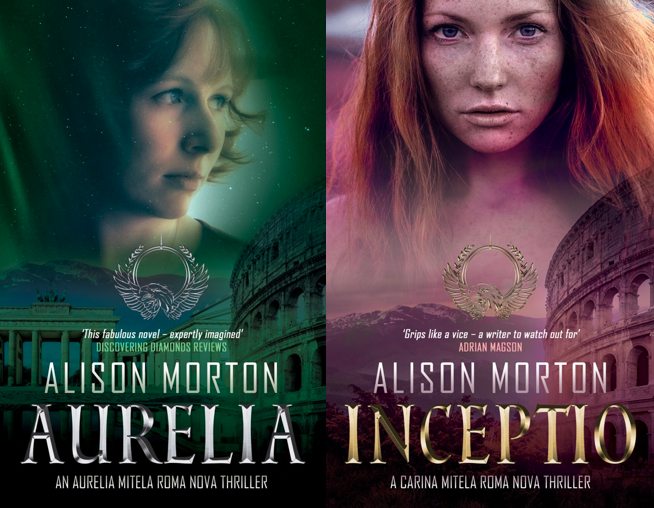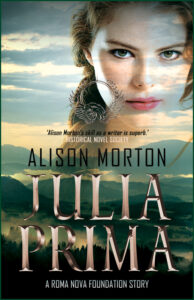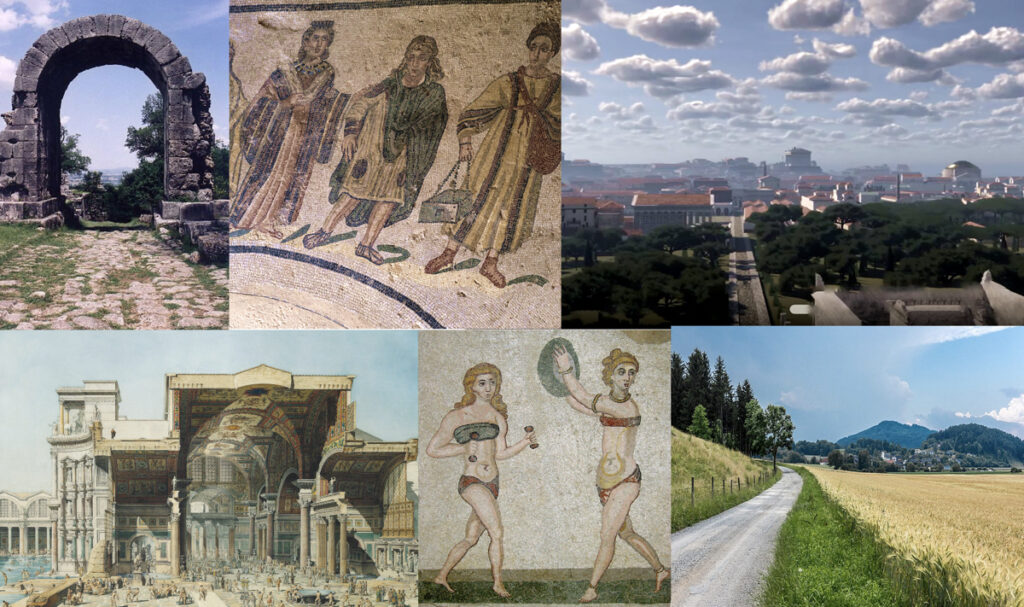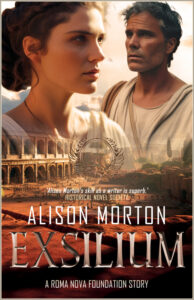 I’m known as a writer of alternative history thrillers featuring modern Praetorian heroines, Carina and Aurelia. That’s my “brand” and my deep interest. Not always a wise commercial decision, but these have been the stories I’ve itched to write.
I’m known as a writer of alternative history thrillers featuring modern Praetorian heroines, Carina and Aurelia. That’s my “brand” and my deep interest. Not always a wise commercial decision, but these have been the stories I’ve itched to write.
But since JULIA PRIMA came out in August, I’ve been asked frequently what made me go back to the real timeline in the 4th century to write about the founders of Roma Nova.
JULIA PRIMA was inspired by my readers. They wanted to know how and why the 21st century Roma Nova was established back in the 4th century. Most of all, they were more than curious about the people who had stood up for their values in the face of lethal threats and eventually torn themselves away from everything they knew.
At the time of JULIA PRIMA, we are still in the normal timeline – history as we know it is exactly the same – so this story is a standard, real historical novel. Well, as much as any historical fiction is standard or real where the sources are not brilliant. And writing within those “constraints’ was an interesting experience, to say the least.
The difference comes twenty five years later in AD 395, when the timeline does diverge and create an alternative path through the centuries. (And yes, I am starting to write it, but the research is “challenging”.) However, the research is absolutely necessary in order to set the framework for the point of divergence from the timeline. Believe me, the last three decades of the fourth century were complex, unstable and not always well-documented!
How different is it writing standard historical fiction from writing alternative history stories?
JULIA PRIMA is set in our historical timeline between AD 369 and 371 when the Roman world was riddled with religious strife and on the brink of transformation. That transformation hasn’t kicked off yet, but it’s hovering. No moment in history is fixed; it has its causes – direct and indirect – and its consequences – short term and long term. Behind the personal story of Julia and Lucius, this new book shows how the signs of decline are well and truly there and sets the scene for the start of the collapse.
Alternat(iv)e history takes off from a point of departure (POD) triggered by an event, large or small. Writers should use the conditions prevailing at that point as the basis for developing their alternative timeline along historically logic lines. But essentially, you are writing in a void. With historical fiction, there are sources, both documentary and archaeological, sometimes sparse and often biased, but they are something available for reference and consultation, even though analysis of these sometimes causes strong arguments!
So, on the one hand, historical fiction writers have a skeleton, sometimes a whole body of research to mine for research. But opposite that, the good historical fiction writer is constrained by being obliged to search out and check with existing sources and in my opinion, not wander too far off verifiable facts. You can’t invent new Roman emperors, for example and retain credibility – we know who they all were!
Will the next book, EXSILIUM, the sequel to JULIA PRIMA, be standard historical fiction or alternative history fiction?
Both. 😉 The first part continues in our timeline until the first ox-cart and group of riders leave Rome.
After that, we launch into the Roma Nova void and undertake the journey that will form the background legend to the whole Roma Nova series.
Then everything comes back full circle to the 21st century and INCEPTIO.
Updated February 2024: Alison Morton is the author of Roma Nova thrillers – INCEPTIO, CARINA (novella), PERFIDITAS, SUCCESSIO, AURELIA, NEXUS (novella), INSURRECTIO and RETALIO, and ROMA NOVA EXTRA, a collection of short stories. Audiobooks are available for four of the series. Double Identity, a contemporary conspiracy, starts a new series of thrillers. JULIA PRIMA, Roma Nova story set in the late 4th century, starts the Foundation stories. The sequel, EXSILIUM, is out on 27 February 2024.
Download ‘Welcome to Alison Morton’s Thriller Worlds’, a FREE eBook, as a thank you gift when you sign up to Alison’s monthly email update. You’ll also be among the first to know about news and book progress before everybody else, and take part in giveaways.
















It looks (as ever) fascinating and intriguing!
I just hope that Adrianople 378 AD will be reduced to its real significance (not very) and the actual decisive event of Frigidus 394 AD get the treatment they deserve.
Many Roman fiction writers love Adrianople as they can really get stuck in with geopolitics, tactics and the aftermath, but I think it’s become popularised as the Tudors of the Nazis have. It’s an important turning point, but only one of many. History has so many fascinating pivot points that are not always brought to the fore – plenty of topics lying around for historical fiction writers!